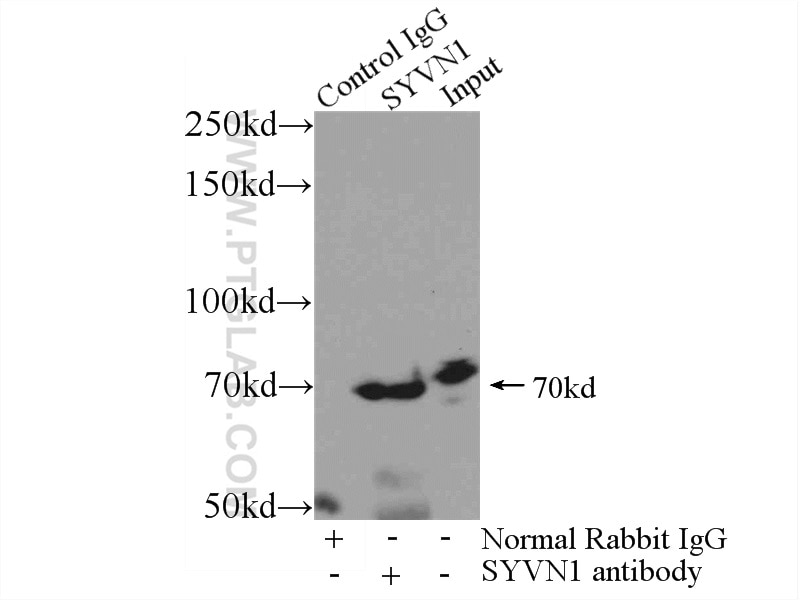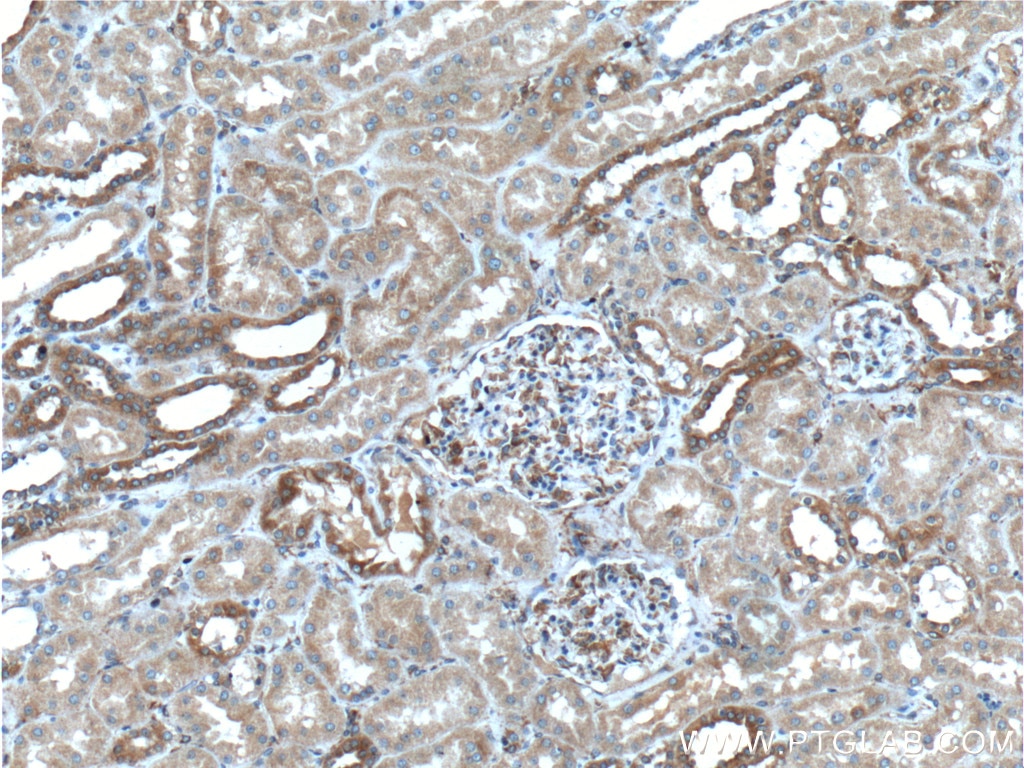Validation Data Gallery
Tested Applications
| Positive WB detected in | HEK-293 cells, HeLa cells, HepG2 cells, MDA-MB-453s cells, mouse kidney tissue, mouse ovary tissue, mouse pancreas tissue, mouse stomach tissue, NIH/3T3 cells, Raji cells, rat stomach tissue |
| Positive IP detected in | mouse kidney tissue |
| Positive IHC detected in | human kidney tissue Note: suggested antigen retrieval with TE buffer pH 9.0; (*) Alternatively, antigen retrieval may be performed with citrate buffer pH 6.0 |
| Positive IF/ICC detected in | HepG2 cells |
Recommended dilution
| Application | Dilution |
|---|---|
| Western Blot (WB) | WB : 1:1000-1:4000 |
| Immunoprecipitation (IP) | IP : 0.5-4.0 ug for 1.0-3.0 mg of total protein lysate |
| Immunohistochemistry (IHC) | IHC : 1:50-1:500 |
| Immunofluorescence (IF)/ICC | IF/ICC : 1:50-1:500 |
| It is recommended that this reagent should be titrated in each testing system to obtain optimal results. | |
| Sample-dependent, Check data in validation data gallery. | |
Published Applications
| KD/KO | See 14 publications below |
| WB | See 64 publications below |
| IHC | See 3 publications below |
| IF | See 8 publications below |
| IP | See 6 publications below |
| CoIP | See 5 publications below |
Product Information
13473-1-AP targets HRD1/SYVN1 in WB, IHC, IF/ICC, IP, CoIP, IP-MS, ELISA applications and shows reactivity with human, mouse, rat samples.
| Tested Reactivity | human, mouse, rat |
| Cited Reactivity | human, mouse, rat |
| Host / Isotype | Rabbit / IgG |
| Class | Polyclonal |
| Type | Antibody |
| Immunogen | HRD1/SYVN1 fusion protein Ag4267 相同性解析による交差性が予測される生物種 |
| Full Name | synovial apoptosis inhibitor 1, synoviolin |
| Calculated molecular weight | 617 aa, 68 kDa |
| Observed molecular weight | 68-76 kDa |
| GenBank accession number | BC030530 |
| Gene Symbol | HRD1 |
| Gene ID (NCBI) | 84447 |
| RRID | AB_2287023 |
| Conjugate | Unconjugated |
| Form | Liquid |
| Purification Method | Antigen affinity purification |
| UNIPROT ID | Q86TM6 |
| Storage Buffer | PBS with 0.02% sodium azide and 50% glycerol , pH 7.3 |
| Storage Conditions | Store at -20°C. Stable for one year after shipment. Aliquoting is unnecessary for -20oC storage. |
Background Information
HRD1is also named as SYVN1(Synovial apoptosis inhibitor 1) , KIAA1810. It acts as an E3 ubiquitin-protein ligase which accepts ubiquitin specifically from endoplasmic reticulum-associated UBC7 E2 ligase and transfers it to substrates, promoting their degradation. Two distinct binding sites mediate Hrd1 dimerization or oligomerization, one located within the transmembrane region and another within the cytosolic domain. (PMID:19864457).Western blot analysis detected abundant HRD1 expression in liver and kidney. Mouse liver and spleen expressed Hrd1 as an 85-kD protein(PMID:12646171).
Protocols
| Product Specific Protocols | |
|---|---|
| WB protocol for HRD1/SYVN1 antibody 13473-1-AP | Download protocol |
| IHC protocol for HRD1/SYVN1 antibody 13473-1-AP | Download protocol |
| IF protocol for HRD1/SYVN1 antibody 13473-1-AP | Download protocol |
| IP protocol for HRD1/SYVN1 antibody 13473-1-AP | Download protocol |
| Standard Protocols | |
|---|---|
| Click here to view our Standard Protocols |
Publications
| Species | Application | Title |
|---|---|---|
Cell Metab AIDA Selectively Mediates Downregulation of Fat Synthesis Enzymes by ERAD to Retard Intestinal Fat Absorption and Prevent Obesity. | ||
J Clin Invest Hypomorphic variants of SEL1L-HRD1 ER-associated degradation are associated with neurodevelopmental disorders | ||
Mol Cancer CircNR3C2 promotes HRD1-mediated tumor-suppressive effect via sponging miR-513a-3p in triple-negative breast cancer. | ||
Mol Cell Redundant and Antagonistic Roles of XTP3B and OS9 in Decoding Glycan and Non-glycan Degrons in ER-Associated Degradation.
| ||
Nat Commun PGRMC1 acts as a size-selective cargo receptor to drive ER-phagic clearance of mutant prohormones. |














